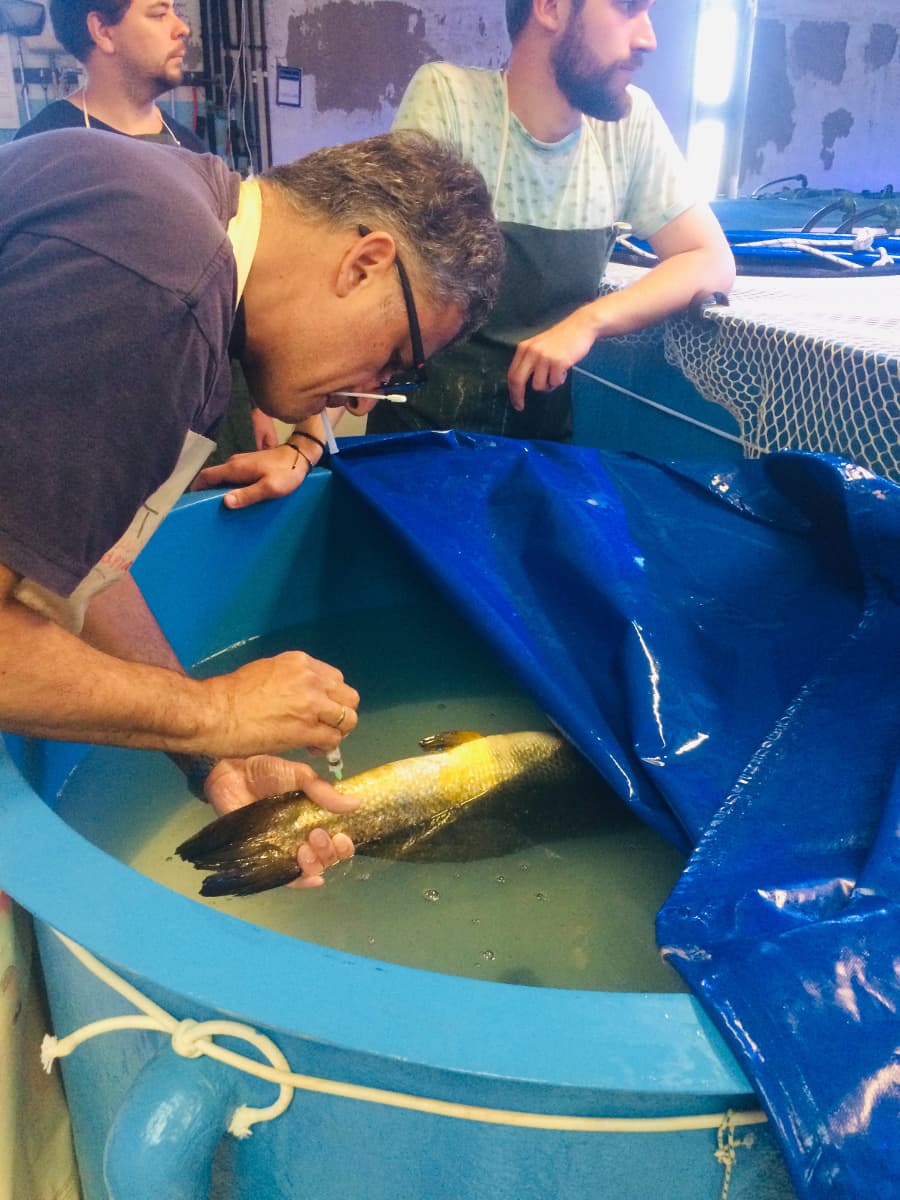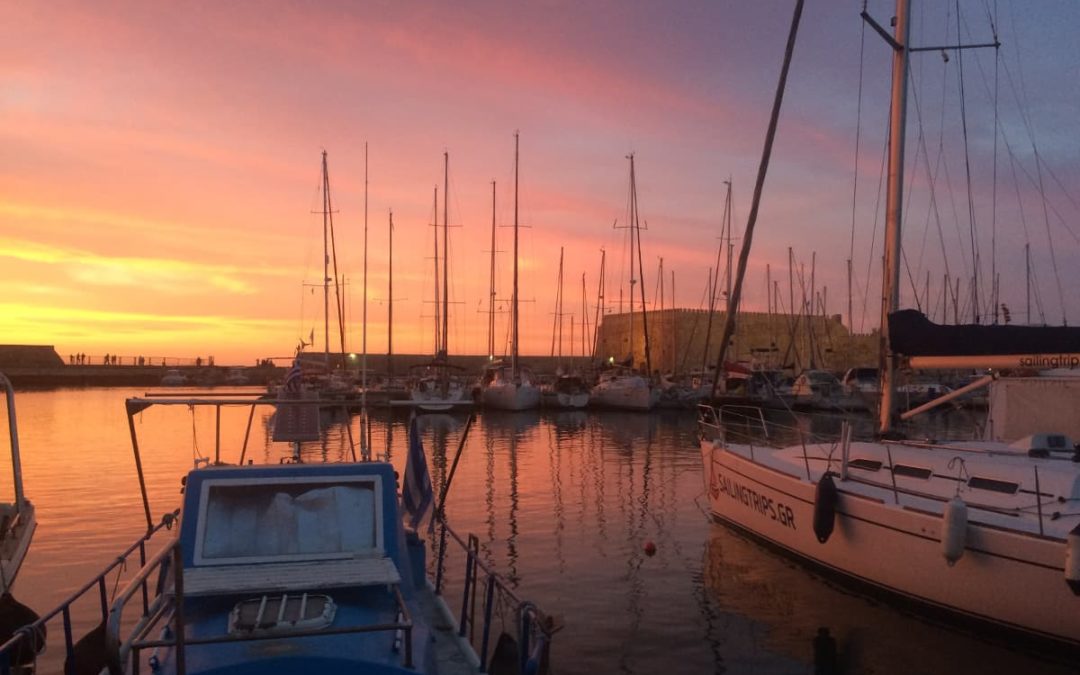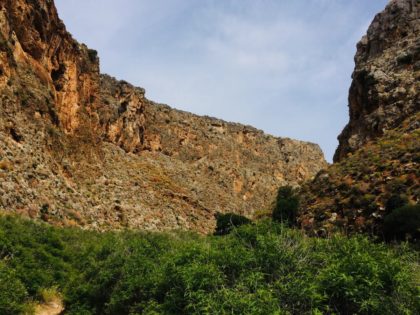I graduated with a marine biology degree from the University of Bremen in March this year. Because I had not decided what kind of career I would pursue (PhD or no PhD? Which field exactly?) an internship abroad seemed like a great opportunity to learn what working in aquaculture research is like. And it was!
My work and the experiment
Reading it like that the topic might sound a little boring and not something that the world needs, when, in fact, it is the complete opposite. People love to eat fish and this is the main reason nearly all of our seas are overfished. When you have a look at the “guide to good fish”, a guideline for sustainable fisheries provided by Greenpeace and WWF, you can see that a lot of seafood that we can find in our supermarkets does not come from sustainable fisheries. Bottom trawlers destroy the very sensible ocean floor and result in a lot of bycatch. Wild fish stocks are oftentimes overfished, e.g. cod in the Baltic or the North Sea.
Aquaculture, which means breeding of fishes in captivity (just like pigs, chickens and cattle), seems like a perfect solution but it also has its disadvantages. Many commercial and popular food fishes are carnivorous (e.g. salmon) and are fed with feed that has a high amount of fish meal. Fish meal is made from small marine fishes (mainly wild-caught), which is not used for direct human consumption. For example anchovies in the very productive regions off Peru and West Africa are almost solely caught for the production of fish meal. Therefore, its production contributes significantly to over-fishing. To raise a ton of fish in an aquaculture facility, around four to five tons of fish meal feed are needed. The problem of fish meal requirement for aquaculture is known, and scientists are trying to develop feeds with vegetable or insect protein as a fish meal replacement for a more sustainable fish production.
Another problem is that fish species do not reproduce well in captivity. This is a difficulty in aquaculture, where reared larvae are necessary to avoid having to catch wild juveniles for raising. For sustainable aquaculture it is important to produce high quality eggs and sperm, so that enough fish survive, grow and can be sold to customers.
I learned more about this challenge in my 10 weeks internship on Crete (Greece) at the Hellenic Centre for Marine Research (HCMR), where I was involved with broodstock management in the Department of Aquaculture. In the large and well equipped facility next to the ocean many commercially important Mediterranean food fish species are kept for research purposes.
Over the course of the year, these species reproduce (spawn) at different times, which is when the experiments have to take place. A lot of commercial fish species in aquaculture have problems with reproduction in captivity. For example, the females fail to complete egg development or the males do not produce enough/high quality sperm.
To induce spawning in captivity the environmental factors such as temperature, day/night cycle and tank structure can be manipulated. But sometimes that can be very tricky or even impossible for certain species.
That’s why, in our facility we used specific hormones (GnRH) to start and enhance spawning in the fishes (picture). These hormones help to activate proteins which are involved in egg and sperm production.
The experiment that I was involved in tested whether keeping fish at a constant temperature (regular water from the well) rather than at fluctuating temperature (heating and cooling the tank water) will influence the spawning success in the meagre Argyrosomus regius. It would significantly lower maintenance costs in aquaculture facilities, if fish would spawn under constant temperature, rather than having to heat and cool the water.
For this, two groups of meager were kept in well water and seasonal fluctuating temperature prior to the experiment.
 To start the experiment, blood and sperm samples were taken from every fish as well as biopsies of the oocytes (see picture below). Fishes were then placed as pairs (one male and one female respectively) in new tanks with a constant temperature of 19°C. Two to three days after the hormone injection the fishes started to spawn. The eggs were collected and counted every day in the morning, and fecundity (percentage of live eggs) and fertility (amount of eggs) were calculated.
To start the experiment, blood and sperm samples were taken from every fish as well as biopsies of the oocytes (see picture below). Fishes were then placed as pairs (one male and one female respectively) in new tanks with a constant temperature of 19°C. Two to three days after the hormone injection the fishes started to spawn. The eggs were collected and counted every day in the morning, and fecundity (percentage of live eggs) and fertility (amount of eggs) were calculated.
Eggs were observed for seven days, survival and growth of larvae was recorded to assess the development of the larvae
Over the course of one month the fishes were sampled every week and injected with a new dose of hormones. The experiment ended with one final sampling after six weeks.
By the of my internship at the HCMR not all the statistic analysis was completed but we found that fish from the well water at constant temperature did not spawn as well as fish that were held at seasonally changing temperature. This would mean that seasonal changes in temperature are an important factor for successful spawning of meagre under aquaculture conditions and that the heating and cooling of the water is necessary.
Other works around the facility were various and with more than five hundred fishes around, never seemed to end. Once one task was finished you already had to start with the next one.
Every day started with the morning check, where I had to make sure that all fish are alive and all equipment is functioning. This was followed by feeding of the fish. Then the tanks needed to be cleaned, water parameters measured, eggs collected, temperature adjusted… you get the idea. It got even busier once the experiments started, with sampling of the fish and analyzing of eggs, larvae and sperm and data analysis.
Since animals also had to eat on the weekends, one poor scientist had to come in Saturday and Sunday for rather quick but necessary weekend duties. Luckily my team was quite big so we were rotating these weekend shifts.
I was very lucky with my team because it consisted mainly of Erasmus students doing long term internships. We had the same background (marine biology) and got along really well, which made it easy to find new friends.
Like in most research facilities, the people were very relaxed, friendly and enjoyed explaining their own research. That opened opportunities to have a look at the work of other groups to get a better overview of the work done by the whole research centre. For example I was able to join the pathogen group, since parasites were my research focus in my master thesis.
My life in Crete
Thanks to the very smooth and quick application procedure for Erasmus internships at the University of Bremen it was before I knew it that I was sitting in a plane bound to Heraklion, the largest city on the island. Since the main reason for choosing the location of my internship was the research station (HCMR is a very international institution and one of the best ones in the Mediterranean) I did not have a chance to prepare a lot for the actual island itself. After the first couple of days I was very positively surprised. I was lucky enough to live in a big flat with six Greek roommates who were very welcoming (the typical Cretan mentality as I learned) and happy to show me around the city and insisted that I have to try all the typical Cretan foods and drinks. The Erasmus community in Heraklion is well established and there is always something happening at night or on the weekends and it was very easy to meet new people. For example, I went for a lot of hiking trips around the island (there are plenty of beautiful gorges) or to postcard-worthy beaches.
Looking back on my time here in Crete and at the HCMR I can only recommend doing an internship abroad during or after your studies! For me, it was a great way to learn more about aquaculture, get a more diverse skill set as a marine biologist and broaden my horizon in terms of research and fish farming in the Mediterranean. In my opinion, Crete is a perfect location for an internship. The friendly and laid back atmosphere is a nice change after a long day at work and the city beaches invite afternoon snorkels or swims.




Neueste Kommentare